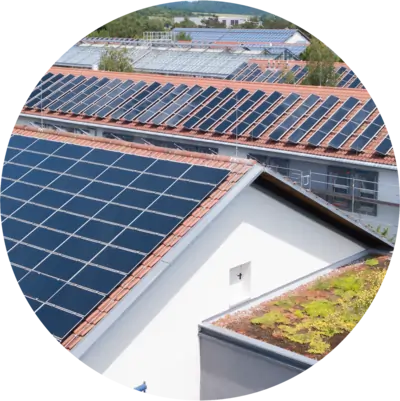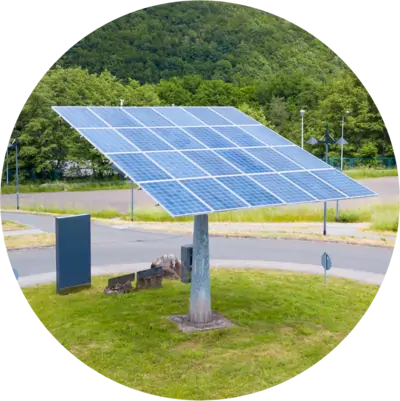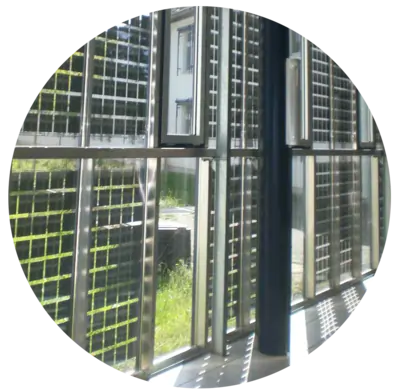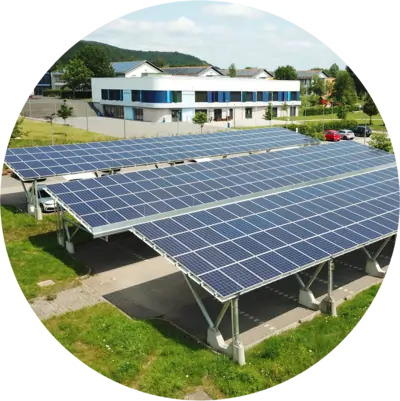Turning solar power into electricity
Photovoltaic systems (PV systems) contibute significantly to reducing carbon dioxide (CO2 ) emissions and thus protecting the climate. They can be installed in many different ways. Module type, mounting type, location, orientation as well as shading are important factors and influence the energy yield of the system. Various options for implementing photovoltaics are installed at the Environmental Campus. The PV systems on campus have an output of approx. 1,570 kilowatt peak (kWp), which generates around 1,300 megawatt hours (MWh) electricity per year.
This is sufficient, for example, to supply 325 four-person households with an average consumption of 4,000 kilowatt hours (kWh) electricity per year. The generated solar power is consumed in the buildings of the Environmental Campus and also partially fed into the public grid. The totality of the installed PV systems cover about 60% of the electricity demand on campus.

Rooft op PV systems*
1.450 kWp
Nearly every roof on campus is covered with solar modules. Some of the modules are elevated towards the south in order to make optimal use of the solar radiation.
* Aft er the expiry of the feed-in tariff period, in accordance with the German Renewable Energy Sources Act (Erneuerbare-Energien-Gesetz, EEG), a repowering of the PV systems is planned.

Tracked system
4,9 kWp
The solar modules are installed on a tracker that follows the course of the sun. The tracker is biaxial, which means that it can rotate around its own axis as well as tilt around the angle of inclination. This allows the energy yield to be increased by up to 30%.

Building-integrated PV systems
20 kWp
The building-integrated solar modules are glass-glass modules that can be integrated into the building envelope (roof, wall etc.). The facades of the intermediate corridors on campus have been built with such solar modules.

Solar carport*
96 kWp
The electricity generated by the solar modules on the roof of the carport is stored in a battery and used to charge electric vehicles.
* In 2026, around 15 additional solar carports with an output of approximately 700 kWp will be installed.

Art object
0,5 kWp
The solar modules have been integrated into a work of art in front of the Central Building.